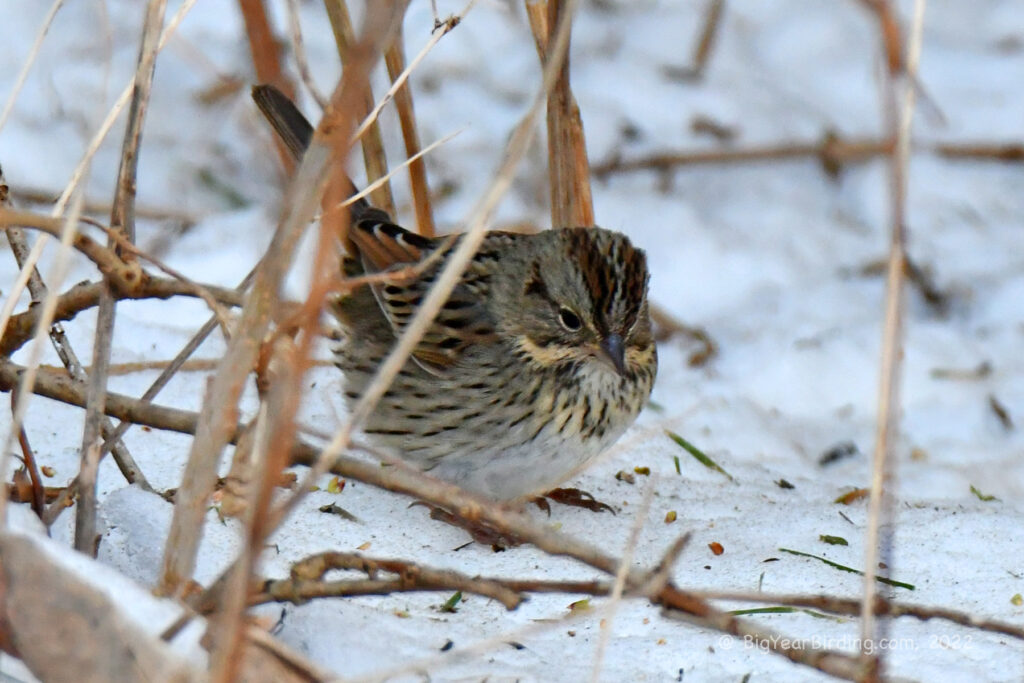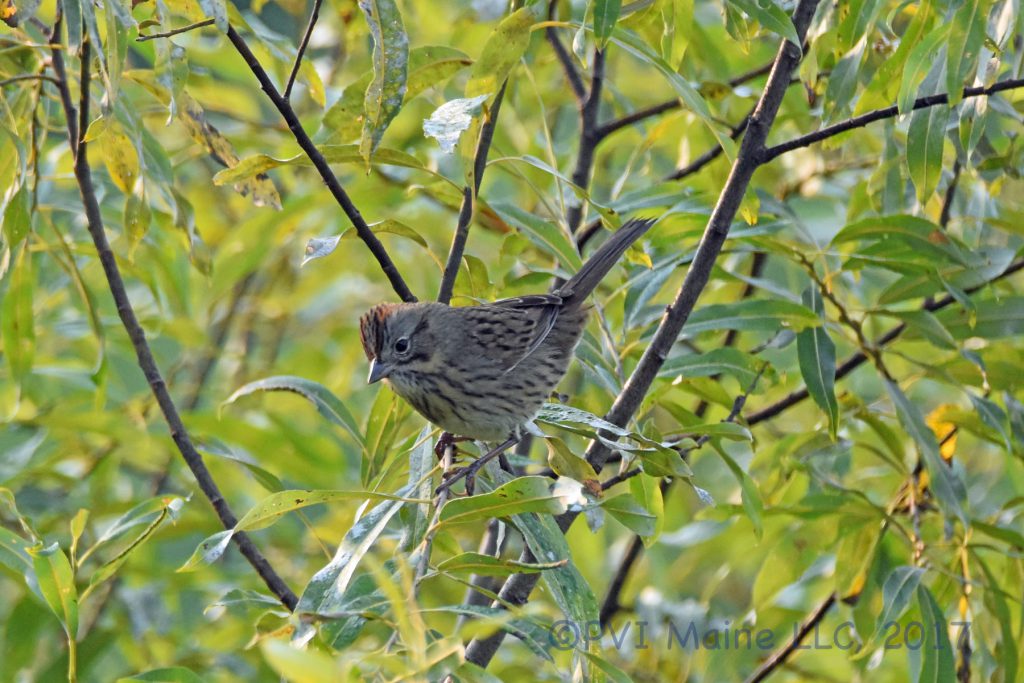
The Lincoln’s Sparrow (Melospiza lincolnii) is a small passerine bird in the family Passerellidae, with a length of 5.5-6 inches and a wingspan of 7.5-8.5 inches. This bird weighs between 0.35-0.6 ounces. Its plumage is distinctive, with a brownish-gray head, back, and wings, and a streaked breast and flanks. Its underparts are light gray with a buffy wash. The bill is thin and pointed, with a pale base, and the legs are pinkish-brown.

During the breeding season, Lincoln’s Sparrows can be found in wet meadows, bogs, and shrubby areas near water in Alaska, Canada, and the northern United States. They breed in the high mountains of western North America, where they prefer open areas near timberline. During migration, they move southward to wintering grounds in the southwestern United States, Mexico, and Central America.
Lincoln’s Sparrow is a shy and secretive bird, and it can be challenging to spot it in the wild. However, it can be identified by its distinctive song, which is a series of clear, whistled notes followed by a trill. Its call is a thin, high-pitched tseep. It also has a distinctive habit of flicking its tail up and down when perched on a low branch or stem.
During migration, Lincoln’s Sparrow can be seen in a wide variety of habitats, including fields, forests, and marshes. It is more likely to be seen foraging on the ground than in trees, where it searches for seeds, insects, and other small invertebrates.

In conclusion, the Lincoln’s Sparrow is a small, secretive bird with distinctive field marks, including its brownish-gray plumage, streaked breast, and pointed bill. It breeds in wet meadows and shrubby areas near water in northern North America, and it migrates southward to wintering grounds in Mexico and Central America. This bird’s distinctive song and tail-flicking behavior make it easier to identify, and it can be found foraging on the ground in a variety of habitats during migration.

